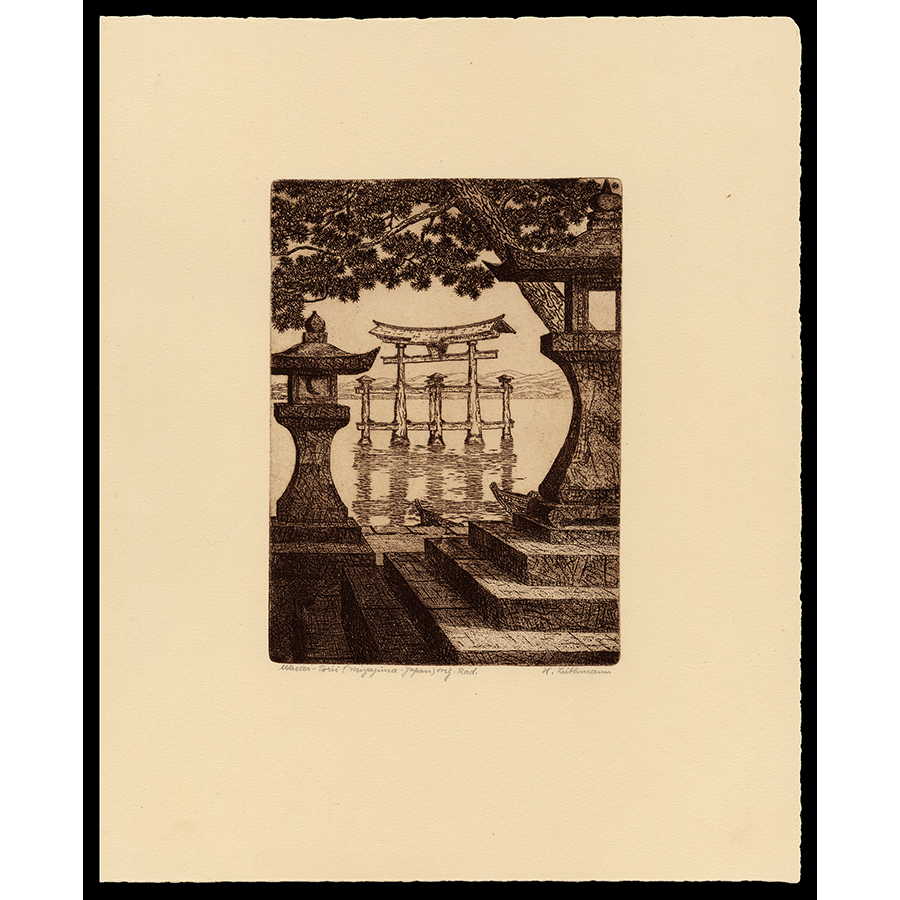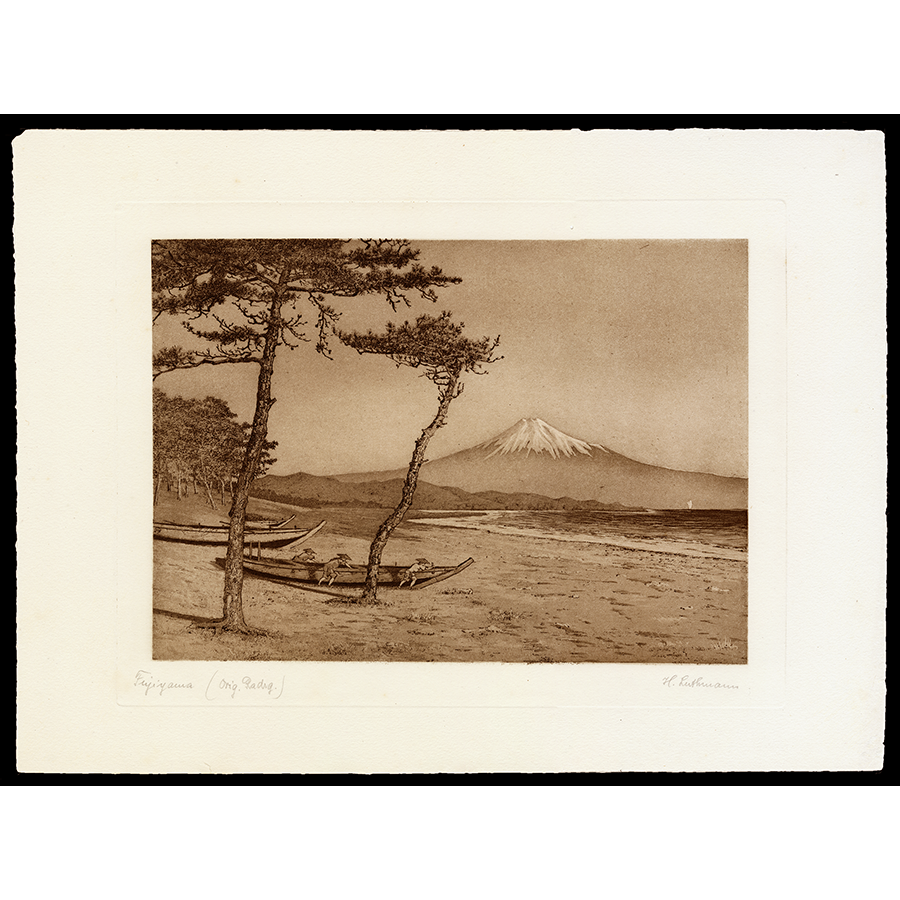<b>MIYAJIMA</b> / Hans Luthmannc. 1931$800</em>
ARTIST: Hans Luthmann (1888-1945)
TITLE: Torii and Lanterns, Miyajima
MEDIUM: Etching
DATE: c. 1931
DIMENSIONS: 14 3/4 x 12 1/4 inches
CONDITION: Excellent—no problems to note
$800.00
ARTIST: Hans Luthmann (1888-1945)
TITLE: Torii and Lanterns, Miyajima
MEDIUM: Etching
DATE: c. 1931
DIMENSIONS: 14 3/4 x 12 1/4 inches
CONDITION: Excellent—no problems to note
$800.00
ARTIST: Hans Luthmann (1888-1945)
TITLE: Torii and Lanterns, Miyajima
MEDIUM: Etching
DATE: c. 1931
DIMENSIONS: 14 3/4 x 12 1/4 inches
CONDITION: Excellent—no problems to note
$800.00
Details
Hans Luthmann was born in Germany in 1888. He first traveled to Hong Kong and Shanghai in 1910 as a merchant for a German dyestuff factory. In 1914, he was taken as a prisoner of war after the siege of Tsingtau and sent to Japan. Luthmann stayed in various prisoner-of-war camps throughout Japan until 1920. It was during his time in those camps that Lutthmann was introduced to art. Upon his release, he invited recently released artists from various prison camps to stay at his home in Japan. From their visits, Luthmann furthered his art training. He continued to seek friends among Japanese artists and attended Japanese art exhibitions. In 1921, he discovered the book "Modern Graphic Arts" by Prof. H.W. Singer in a Tokyo bookshop. This reference and the books by Joseph Pennell became his sole instructors in etching.
Despite his harsh introduction to Japan, Luthmann became quite enamored by Japanese culture and the country’s natural beauty. In this print, the artist provides a stunning view of the Itsukushima Shrine’s floating torii gate at Miyajima. The torii gate signifies the ground around the gate structure as sacred. In fact, the entire island is considered to be a Shinto deity worthy of respect and worship.
Like many artists of this period, such as Hasui or Koitsu, Luthmann showcases the torii gate in his design. Unlike other compositions, Luthmann elects to frame the gate between two stone lanterns creating a dramatic and well-portioned composition. It’s particularly noteworthy to point out Luthmann’s ability to reproduce varying types of surfaces within the etching—stone, tree bark, and the leaves overhead come to life.
Connoisseur's Note
It is astonishing to consider that Luthmann is mainly self-taught, learning the art of etching from books, as the work clearly demonstrates a mastery of the medium. The artist went on to produce dozens of Japanese-themed designs. His work is particularly admired for spellbinding, intricate landscapes that usher the viewer into a world of nature and magic. The minute detail Luthmann can achieve within his designs is astonishing. He conjures an entire cosmos within the confines of a sheet of paper.
Luthmann did not produce work in large quantities, and his Japanese-themed etchings are his most sought-after work. This print is a fantastic opportunity to acquire one of the artist’s most charming Japanese designs in an excellent state of preservation.





